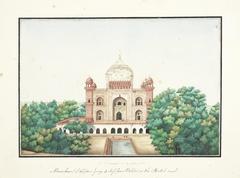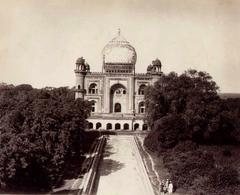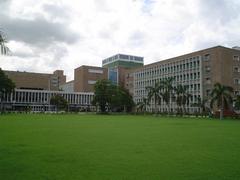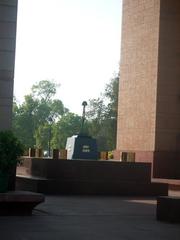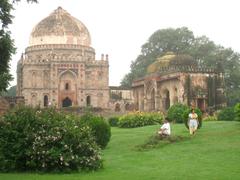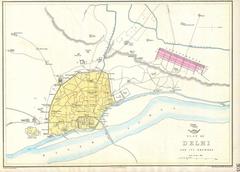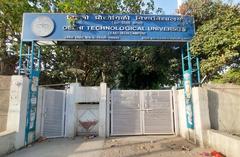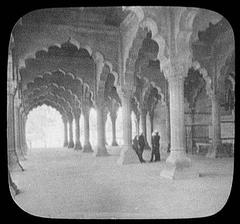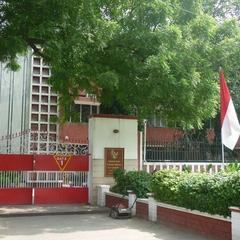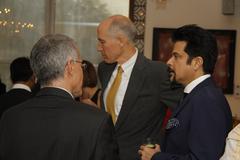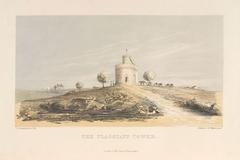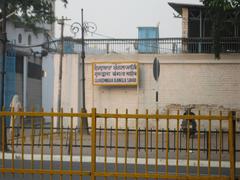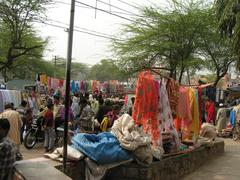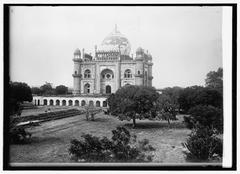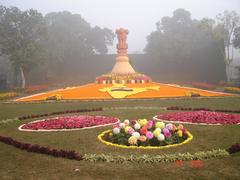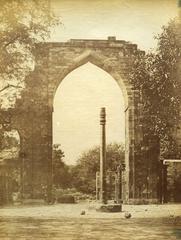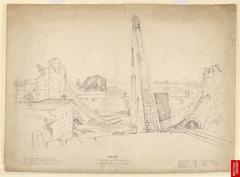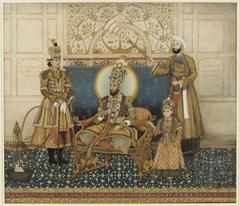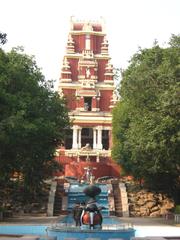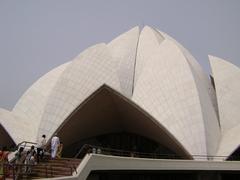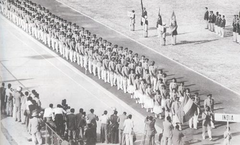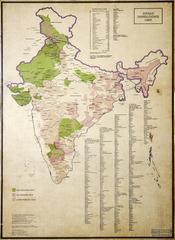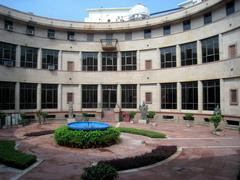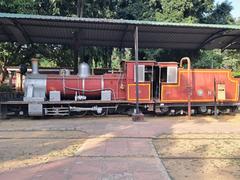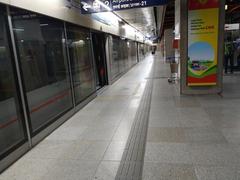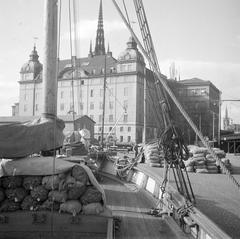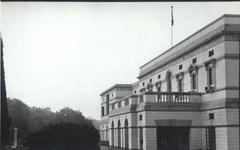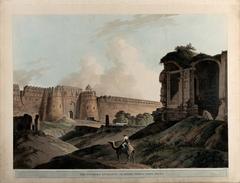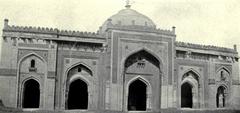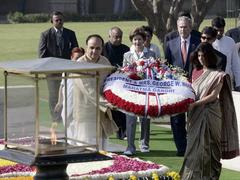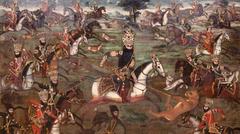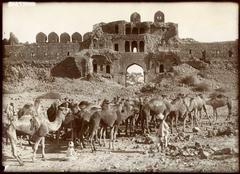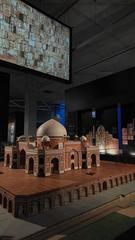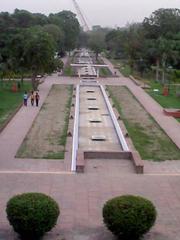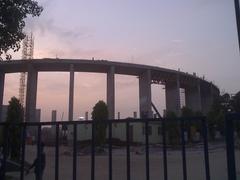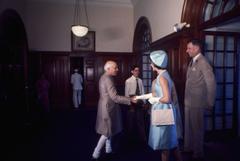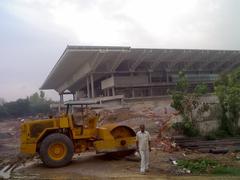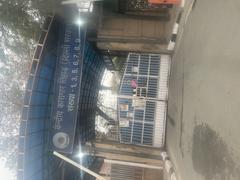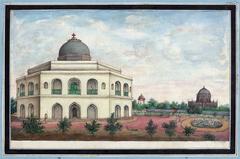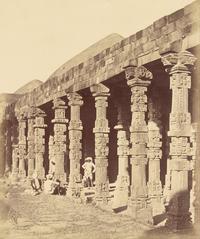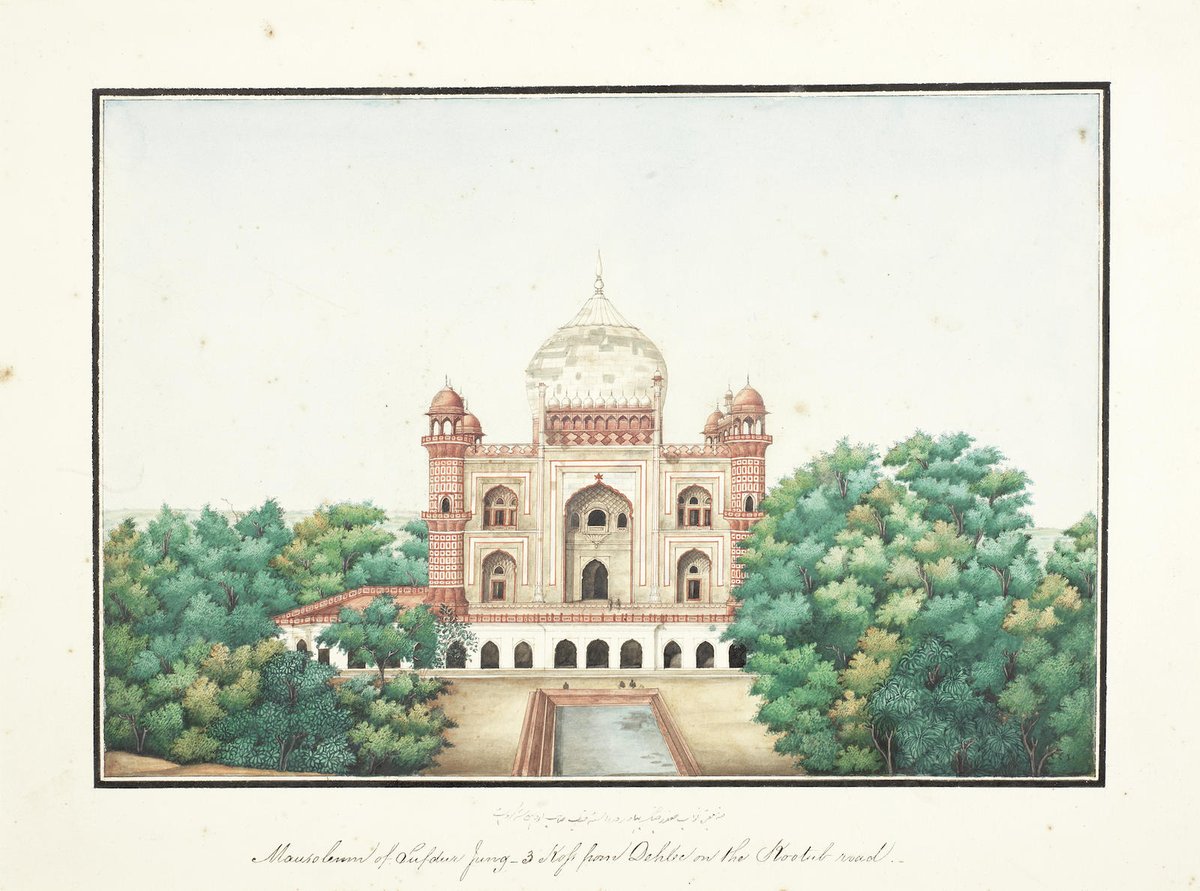
Tomb of Safdar Jung: Visiting Hours, Tickets & Historical Guide, New Delhi
Date: 14/06/2025
Introduction
Situated in the heart of South Delhi, the Tomb of Safdar Jung is a striking vestige of Mughal grandeur from the 18th century. Commissioned in 1753–54 CE by Nawab Shuja-ud-Daula in honor of his father, Mirza Muqim Abul Mansur Khan (Safdarjung), this monument exemplifies the twilight of Mughal architecture. Its red sandstone and marble construction, crowned by a majestic dome and set amidst serene Charbagh gardens, tells the story of a fading empire and its lasting artistic legacy. This guide provides essential information on visiting hours, tickets, accessibility, and travel tips, as well as a comprehensive look at the tomb’s historical and cultural significance (Delhi Metro Times; ASI Official Site).
Historical Background
Origins and Patronage
Safdarjung served as the powerful Prime Minister (Vizier) under Emperor Muhammad Shah, navigating the complexities of a declining Mughal Empire. Recognized for his loyalty and governance, his son, Nawab Shuja-ud-Daula, built this mausoleum to honor his father’s legacy. The tomb stands as a symbol of Mughal endurance, even as the empire faced fragmentation and decline (Delhi Metro Times).
Architectural Context and Design
Regarded as the last monumental garden tomb of the Mughals, Safdarjung’s Tomb draws inspiration from earlier structures like Humayun’s Tomb. It follows the Persian Charbagh (four-part garden) layout, with the mausoleum at its center. The main structure uses red sandstone and white marble, and is flanked by three pavilions—Moti Mahal, Jangli Mahal, and Badshah Pasand—which historically served as residential quarters (Delhi Metro Times; indianholiday.com).
Artistic and Cultural Legacy
Despite the empire’s diminishing resources, the tomb boasts intricate latticework (jali), floral motifs, and geometric patterns. The Charbagh gardens and water channels create a tranquil atmosphere reflecting Islamic concepts of paradise. The addition of a mosque and library underscores the tomb’s multifunctional role as a site of commemoration, worship, and scholarship.
Preservation
After periods of neglect, the Archaeological Survey of India has undertaken significant restoration efforts, ensuring the monument’s preservation as a protected heritage site (ASI Official Site).
Location and Accessibility
Safdarjung’s Tomb sits at the intersection of Safdarjung Road and Aurobindo Marg, near Lodhi Gardens and the Air Force Golf Course (Thomas Cook). It is:
- 7 km from New Delhi Railway Station
- 26 km from Indira Gandhi International Airport (India OnGo)
Transportation
- Metro: The nearest station is Jor Bagh (Yellow Line), just 300 meters from the entrance.
- Bus/Auto/Taxi: Multiple bus routes serve the area; auto-rickshaws and taxis are readily available.
- Private Vehicle: Limited parking is available; public transport is recommended (Ease India Trip).
Visiting Hours and Tickets
- Opening Hours: Daily from 7:00 AM to 6:00 PM (last entry typically at 5:30 PM) (India OnGo)
- Night Illumination: The tomb is illuminated from 7:00 PM to 11:00 PM for external viewing (India Highlight).
- Tickets:
- Indian Citizens: ₹25
- Foreign Nationals: ₹300
- Children (up to 15 years): Free
- Digital Cameras: Free
- Video Cameras: ₹25 (Ease India Trip)
- Purchase: Tickets are available at the entrance or online via ASI Official Site. Carrying small change is advisable.
Facilities and Amenities
- Restrooms: Available inside the complex (India Highlight).
- Food & Refreshments: No on-site restaurants; street vendors and food stalls are located outside the entrance.
- Accessibility: Most pathways are level, but some interior sections have steps or uneven flooring.
- Photography: Digital photography is free; a small fee applies for video cameras.
Navigating the Site
A visit typically takes 1–2 hours. Key features include:
- Central mausoleum and cenotaph
- Charbagh gardens with water channels
- Three pavilions: Jangli Mahal, Badshah Pasand, Moti Mahal
- Mosque and library
Unlike some Delhi sites, visitors can enter the main tomb and its eight rooms (Thomas Cook).
Special Experiences
Guided Tours & Events
Occasional guided tours deepen understanding of the tomb’s history and design. Visitors can check the ASI website or local tour operators for schedules.
Photographic Spots
- The grand dome and marble detailing
- Symmetrical Charbagh gardens
- Illuminated façade at night
Cultural Etiquette
- Dress modestly, especially when entering the mosque area.
- Maintain decorum and avoid loud behavior.
- Smoking, alcohol, and littering are prohibited (Thomas Cook).
Visitor Etiquette and Safety
- Respect the sanctity of the tomb; avoid disruptive behavior.
- Use designated bins for waste.
- Security checks are routine; remain vigilant with personal belongings (India Highlight).
Nearby Attractions
- Lodhi Garden: Historic park for walks and picnics.
- Khan Market: Popular shopping and dining destination.
- Qutub Minar: UNESCO World Heritage Site.
- Rashtrapati Bhavan: The President’s residence.
Practical Tips
- Visit early morning or late afternoon to avoid heat.
- Wear comfortable shoes for walking on garden paths and stone floors.
- Bring water; food is available only outside the complex.
- Combine with nearby sites for a full day of exploration.
Frequently Asked Questions (FAQ)
Q: What are Safdarjung Tomb’s visiting hours?
A: Open daily from 7:00 AM to 6:00 PM.
Q: How much are tickets?
A: ₹25 for Indian citizens, ₹300 for foreign nationals, free for children up to 15 years.
Q: Is photography allowed?
A: Yes, digital photography is free; video cameras require a ₹25 fee.
Q: Are guided tours available?
A: Yes, check the ASI website or with local operators for schedules.
Q: Is the tomb accessible for those with mobility challenges?
A: Most gardens are accessible, but some steps and uneven surfaces exist.
Q: Can I visit at night?
A: Entry is allowed only during daylight; the tomb is illuminated for external viewing from 7:00 PM to 11:00 PM.
Visual and Interactive Content
Find high-quality images, maps, and virtual tours on the ASI website and leading tourism portals. Use keywords like “Safdarjung Tomb visiting hours” or “Delhi historical sites” for additional resources.
Internal Links
Explore more Delhi historical sites:
Conclusion
Safdarjung’s Tomb is not just a mausoleum but a living chronicle of the Mughal era’s final chapter. Its architectural splendor, tranquil gardens, and historical resonance make it a must-visit for anyone interested in Delhi’s heritage. For the latest updates on visiting hours, tickets, and events, consult the ASI Official Site.
Enhance your visit with the Audiala app for guided tours, personalized recommendations, and more. Follow our platform for further insights into Delhi’s historical treasures and plan your journey with confidence.
Summary of Key Points
- Location: Central South Delhi, near major historical sites.
- Hours: 7:00 AM – 6:00 PM daily.
- Tickets: ₹25 (Indians), ₹300 (foreigners), free for children under 15.
- Accessibility: Mostly accessible, some uneven areas.
- Guides: Available onsite and through ASI.
- Etiquette: Respectful attire and behavior required.
- Photography: Allowed; videography requires a fee.
- Nearby Attractions: Lodhi Garden, Khan Market, Qutub Minar.
Safdarjung’s Tomb remains a powerful symbol of Delhi’s Mughal heritage. By observing site guidelines and embracing cultural etiquette, visitors contribute to the preservation of this remarkable monument.
References and Official Links
- Delhi Metro Times
- ASI Official Site
- Thomas Cook
- India OnGo
- India Highlight
- Ease India Trip
- indianholiday.com
